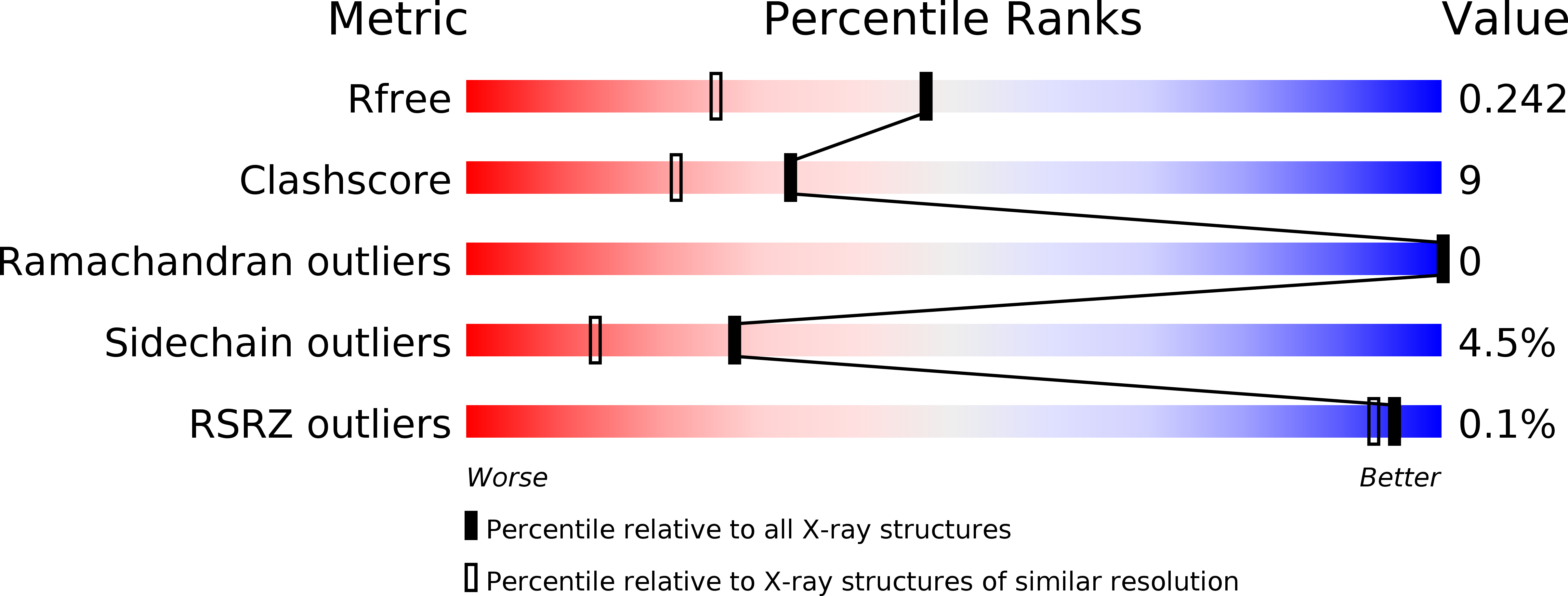
Deposition Date
2014-10-20
Release Date
2016-01-13
Last Version Date
2024-01-10
Entry Detail
PDB ID:
4V3Q
Keywords:
Title:
Designed armadillo repeat protein with 4 internal repeats, 2nd generation C-cap and 3rd generation N-cap.
Biological Source:
Source Organism:
SYNTHETIC CONSTRUCT (Taxon ID: 32630)
Host Organism:
Method Details:
Experimental Method:
Resolution:
1.80 Å
R-Value Free:
0.23
R-Value Work:
0.18
R-Value Observed:
0.19
Space Group:
P 32


